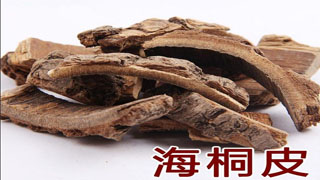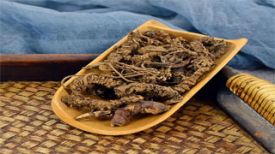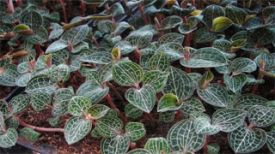
1. Alias
Nail copper skin, thorn bark, drum bark, thorn tong, bone setting medicine.2. Plant morphology
Tall trees. The bark is gray brown, the branches are light yellow to earthy yellow, densely covered with gray hairs, and have black cone-shaped spines. 3 compound leaves, alternate or clustered at the top of branches; Small leaves are broadly ovate to oblique ovate, with the entire margin. A raceme inflorescence with fuzzy hairs; Calyx Buddha flame shape; The corolla is butterfly shaped, bright red in color, with a flag petal that is ovate lanceolate and slightly recurve. The wing and keel petals are nearly equal in length and shorter than the calyx; Ten stamens, two bundles. The pods are bead shaped and slightly curved.
3. Origin distribution
Born in sparse forests in mountainous areas and also cultivated. Distributed in Guangxi, Guangdong, Yunnan, Zhejiang, Fujian, Hunan, Hubei, Guizhou and other places.
4. Harvesting and processing
Peel the bark with spikes in early summer and dry it in the sun.
5. Characteristics of medicinal herbs
Plate like, slightly curled on both sides. The outer surface is light brown, often with uneven width longitudinal grooves and scattered spikes. The spike is long conical in shape, with a sharp tip at the top and a long circular base that extends longitudinally. The inner surface is yellow brown, relatively flat, and has a fine mesh pattern. Hard and tough in texture, with a fragmented cross-section, slightly fragrant in aroma, and a slightly bitter or light taste.
6. Sexual Taste Returning to the Classics
Flat in nature, bitter and pungent in taste. Return to the liver meridian and spleen meridian.
7. Effect and Function
Dispelling wind and dampness, promoting meridian circulation, and relieving pain. Belonging to the category of wind dampness dispelling drugs, it is a strong muscle and bone dispelling medicine.
8. Clinical application
Take 10-20 grams and decoct; Or soak in wine. Apply externally by frying, washing or grinding. Used to treat rheumatism, rheumatism, and pain in the waist and knees; Topical treatment for scabies and eczema.
9. Pharmacological research
Has analgesic and sedative effects; Antibacterial; There is also an antagonistic effect of acetylcholine on intestinal contraction. 1: Three water immersion agents have varying degrees of inhibitory effects on various skin fungi in test tubes.
10. Chemical composition
Containing components such as huperzine alkaloids, lycorine alkaloids, betaine, choline, lycorine alkaloids, lycorine alkaloids, lycorine alkaloids, lycorine alkaloids, lycorine alkaloids, lycorine alkaloids, lycorine alkaloids, lycorine alkaloids, lycorine alkaloids, lycorine alkaloids, lycorine alkaloids, and other compounds.
11. Usage taboos
People with blood deficiency should not take it.
12. Compatibility prescription
① To treat severe cholera: Boil the bark of sea chestnut and take it orally. (St. Francis of Assisi)
② Treatment of childhood roundworm disease: 1.5 to 3 grams of sea chestnut skin. Grind powder and take it with boiling water. (Selected Materia Medica of Guangxi)
③ Treatment of ascites caused by liver cirrhosis: 30g fresh sea chestnut skin. Stewed pork bone costume. (Selected Materia Medica of Guangxi)
④ To treat toothache caused by wind worms: Boil sea tung bark and rinse with water. (Holy Blessing Formula)
⑤ Treating wind ringworm with worms: equal parts of sea chestnut skin and snake bed seeds. Finally, apply it with pig fat. (Ru Yi Fang)
⊙ The content of the article is for clinical reference only. Non TCM professionals are not allowed to test drugs.


